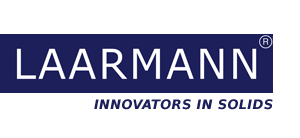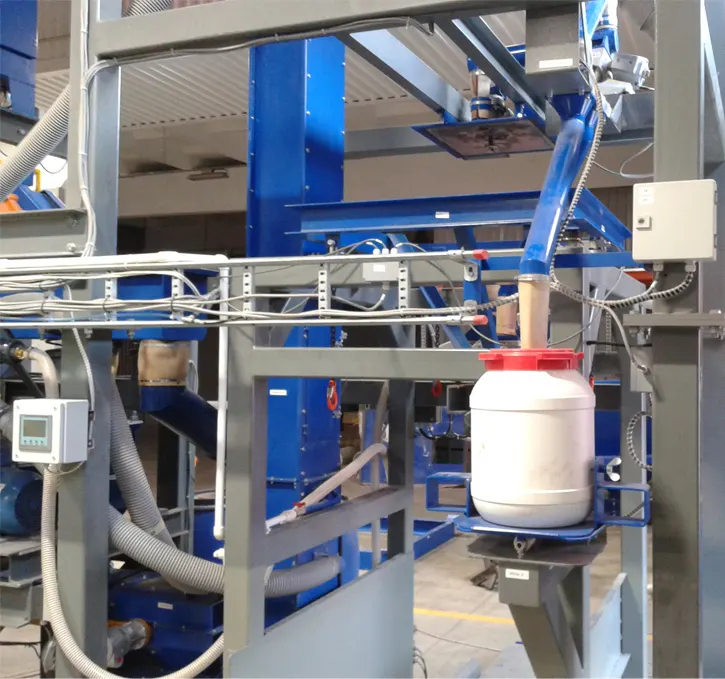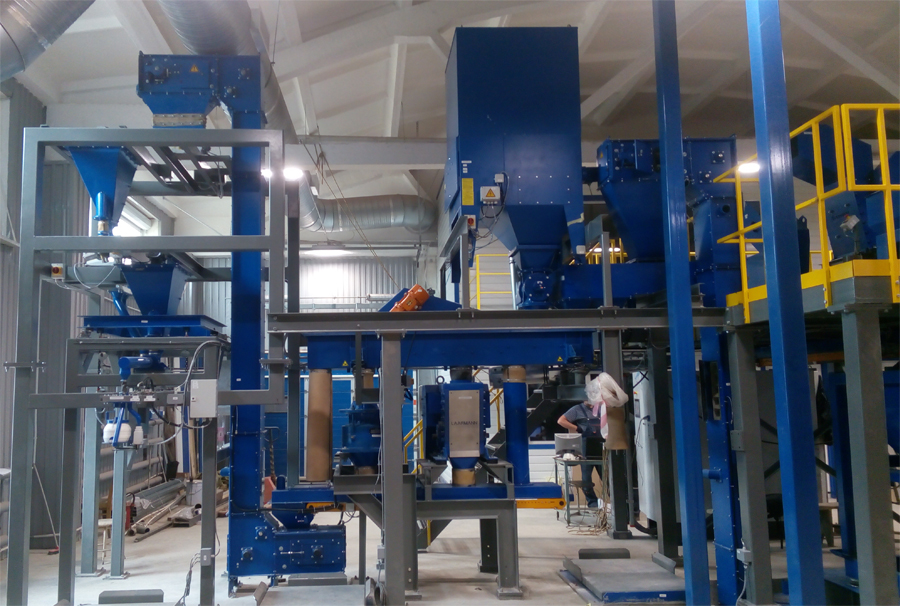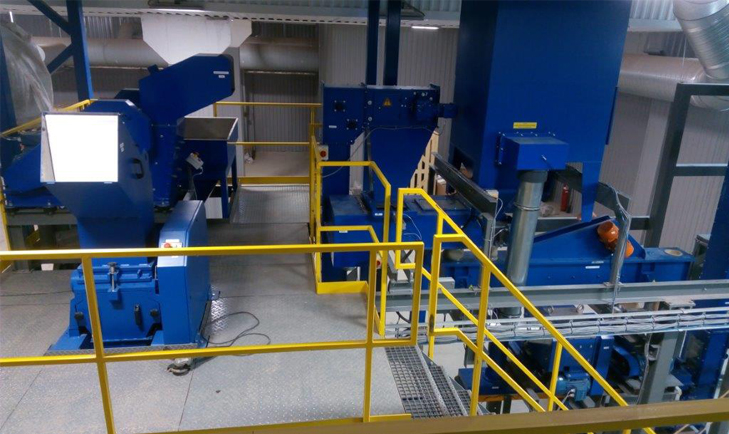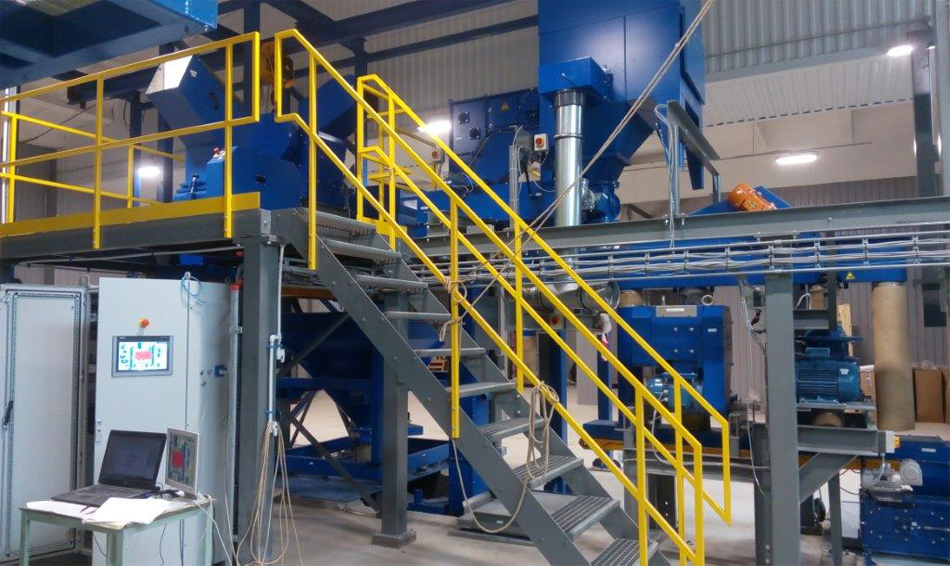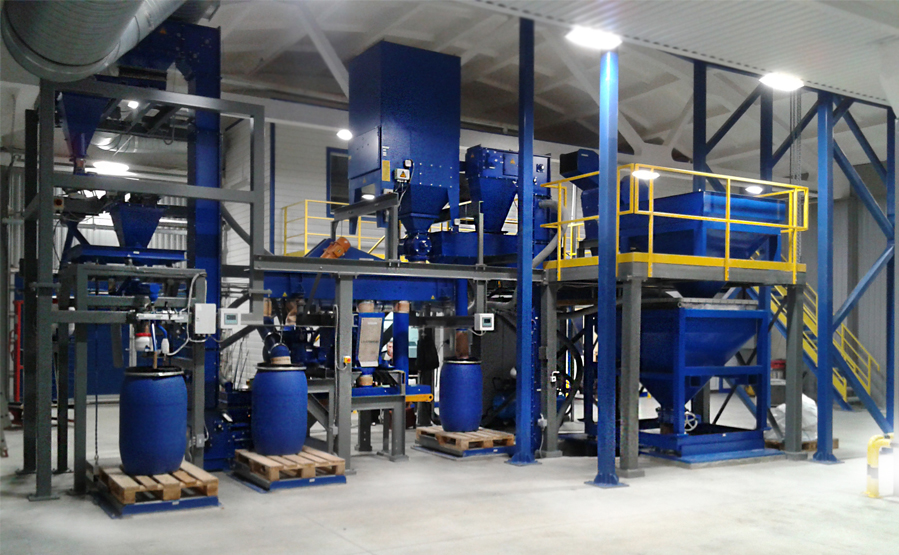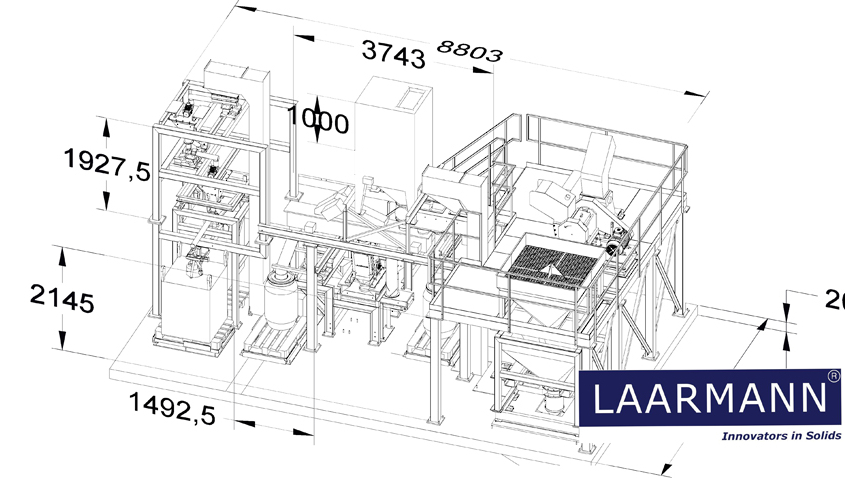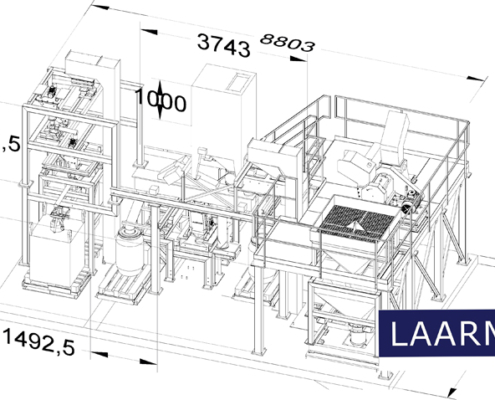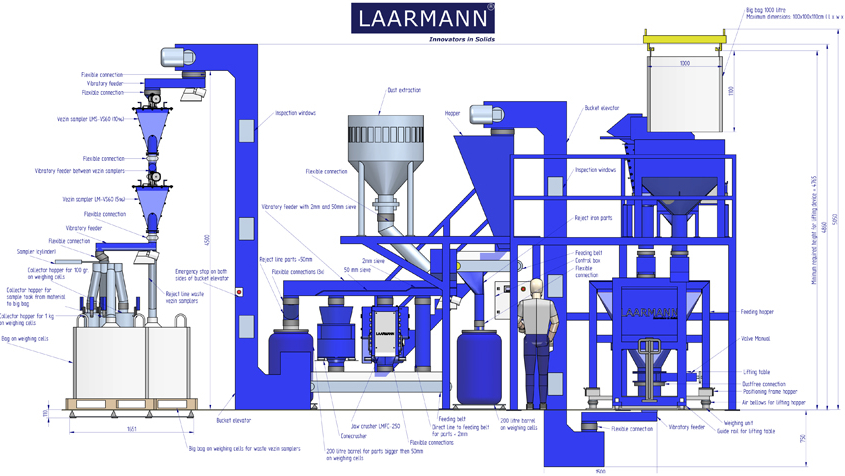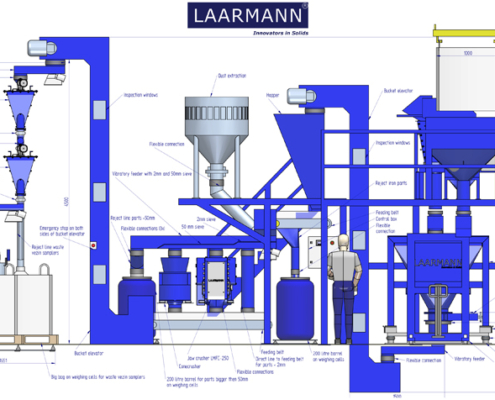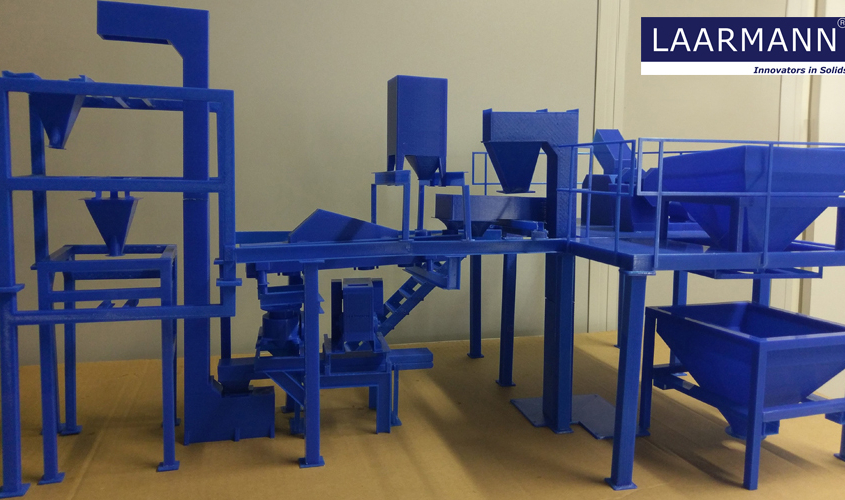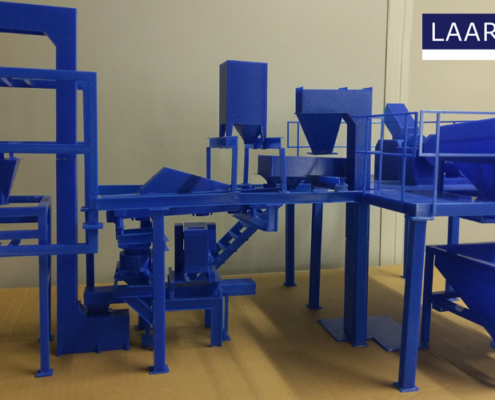Large recycling sampling installation
LAARMANN Group B.V. advises material processing companies to implement their own sampling process instead of outsourcing it. Outsourcing this process creates many expenses. a great amount of material is lost during the process and transportation costs are high.
We have developed an efficient system for sample preparation in the recycling industry. With this system, less material is needed to be sent out for external analysis. This provides a major saving in material costs. Additionally, the system simplifies the preparation process in a way that the amount of samples can be increased, resulting in a improvement in the quality of the production process.
In this way, especially when there are large quantities of precious material, it is most preferred that companies process their own samples. With a good sample preparation process, the amount of sample that needs to be sent for analysis can be reduced from dozens of kilograms to a few hundred grams. Processing the samples in house will make it possible to take multiple samples to determine the quality of the bulk even better. Companies who successfully implement this system not only reduce their material cost but also their transportation costs.
How it works
A big bag with 1000L of ceramic pellets sample can be lifted onto the hopper. The total weight is registered at the start. This is done in order to calculate the process in the sieving tower. If a reject is taken, the reject weight will be deducted from the total weight. A piercing unit is used to open the bag and then the sample will fall into the hopper. The sample is transferred to a bucket elevator with a vibratory feeder.
Windows are placed on the bucket elevator for observation. The sample is taken into a hopper where iron(Fe) material is separated and placed into a 200L reject barrel. The remaining sample is transported by a vibratory feeder with a 2 mm sieve and a 50 mm sieve. If the sample is 2 mm or smaller, it will get onto the feeding belt.
Dust extraction equipment is placed for cleaning. The dust is then returned to the sieving feeding belt in case of weight being lost, to keep the final sample representative
On the platform of the installation, a CM4000 Cutting Mill is built to process other types of material. The computer boards can be placed into the cutting mill. In most cases the computer boards will be cut below 2 mm and will fall directly to the next feeding belt. Another machine that is built on the platform is a LMC400 Jaw Crusher to process big bricks of Ferro Chrome to about 20 mm. After crushing, the material will fall onto the next feeding belt.
If the material is 50 mm or smaller, it will fall into a LMFC250 Fine Crusher to reduce size. After crushing, it will get on the feeding belt. Depending on the material that is being processed, it will fall into the LMFC250 Fine Crusher or the Cone Crusher. The operator can choose which of the crushers will be used on the control panel. If the material is larger than 50 mm, it will fall into a 200L reject barrel. The feeding belt will transport the sample to another bucket elevator to the sampling part of the installation.
When the sample is lifted by the elevator, a small vibratory feeder will transport the sample into the material. To control the stream of samples, two vezin samplers are used. The first Vezin sampler in the sieving tower has a 10% sized spoon. The second Vezin Sampler had a 5% sized spoon. The material is then transported into the weight-based sample divider. To get a representative sample, at least 40 samples have to be taken. The goal is to take between 40 and 120 samples. The sample pots consist of a 300ml pot, a 1L pot and a 200L reject barrel. The system will calculate how the samples are taken from the materials.
Automatization of sample preparation
The Recyling sample installation has simplified the size reduction process for this recycling company to a detailed overview of our software. Now, since there is no more need for the operator to lift any heavy materials or perform multiple actions, the process is more efficient, resulting in more samples and an overall higher quality.
The operator puts the material in one of the inlet funnels and starts the process at the central control panel. A vibratory feeder underneath the inlet funnel evenly feeds the bucket elevator. The bucket elevator lifts the material and feeds the LMFC250 Fine Crusher which reduces the material to < 2mm. In this application, material that’s larger as 50m will fall into a reject barrel.
The advantages of the LAARMANN installation for this steel company can be summarized as:
- The amount of material that needs to be sent to an external laboratory is reduced. In this way, the loss of costly material is very limited.
- The working conditions of the operator are considerably improved. His work load has, thanks to the sample installation, been reduced and he is now available for different tasks.
- The efficiency of the installation allows more samples to be taken and therefore improves the overall quality and representability of the process.
- A more accurate analysis of the purchased goods triggers the suppliers to deliver the high quality raw material. Inferior delivered quality will be spotted at an early stage.
- Weight-based calculations to get a representative sample
- The installation has a dust extraction system, so the cleaning requirement is minimal.
